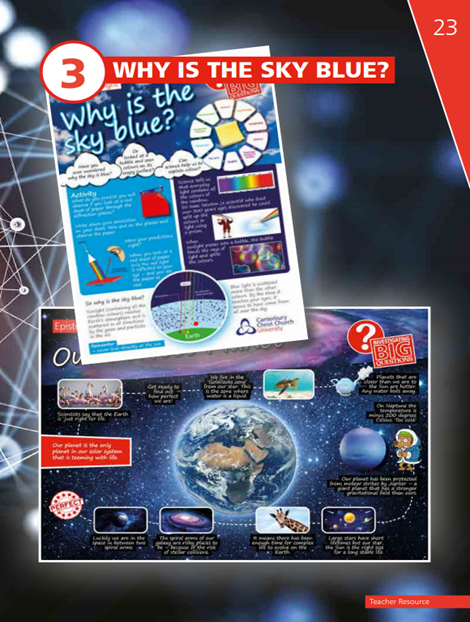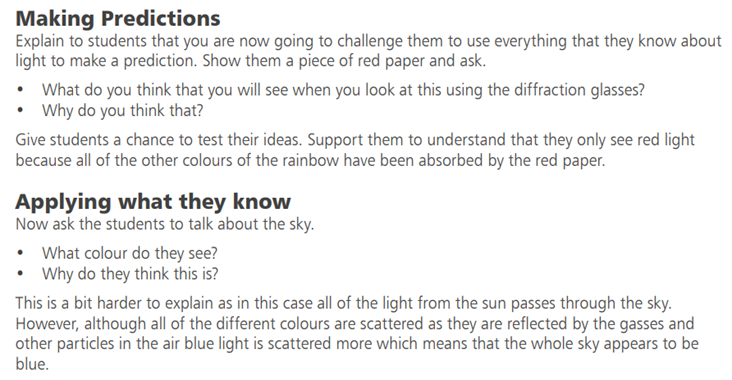Written by Caroline Thomas,Senior Lecturer in Education and Research Fellow for LASAR, Canterbury Christ Church University
If you are a Key Stage 2 or 3 teacher passionate about promoting children’s learning in science, consider joining our Investigating Big Questions Project for schools. The project is open to schools and teachers of pupils aged 7-12 years of age.
I am part of a team of science educators and researchers based at Canterbury Christ Church University. The team has extensive experience of working with schools on a range of projects. We invite teachers to work in partnership with us and use our resources to make hands-on practical science activities accessible to all children
What are the benefits of using our resources?
We offer teachers the use of a range of ready-made teaching resources written by tutors at Canterbury Christ Church University and the University of York. These help children develop essential skills associated with science as a method of enquiry and support critical thinking about the Big Questions. Big Questions are those exciting questions children can ask that science alone can’t answer. Examples include: ‘Why does the earth exist?’ and ‘Are we what we eat?’ Through practical investigations, children can understand what makes science distinctive and how it can help them address these Big Questions.
The resources explore these questions:
- Why do spinners spin?
- How do clouds stay up?
- Why is the sky blue?
- How do we make sense of the weather?
- In the future, will people travel and live in space?
We are working across institutions to support teachers and for each project school, our team can provide teachers with professional development related to using the resources. We provide a discussion card for each activity. I include in this blog the card ‘Our Perfect Planet’ and investigation of the question ‘Why is the sky blue?
The teaching support materials guide teachers through the use of the resources and worksheets for pupils. We provide a free piece of science equipment for each child to use to accompany each card. To investigate why the sky is blue, each child can put on a pair of diffraction glasses and explore colour in the natural world. The children can put their kit together in a ‘discovery bag’ for further exploration and experimentation at school or home.
The resources can be used flexibly as part of teacher’s existing schemes of work, cross-curricular projects, science days and even curriculum enrichment activities. In return, we ask for feedback from teachers, pupils, and parents to help us measure our resources’ effectiveness.
For further information and to express interest in joining us:
Contact us at: LASAR@canterbury.ac.uk
Explore our website with helpful classroom- resources and professional development events for teachers.
An Example Resource Card: The card for ‘Our Perfect Planet’ discussion task and investigation: Why is the sky blue?

Session Aims for Exploring ‘Why is the sky blue?’
- Encourages investigation about the natural world that we can test with observations.
- Explain our blue sky in terms of the scattering of different colours of light.
- Looking at the light spectrum scientifically through use of diffraction glasses.
- Understand how other disciplines might understand experience of colour differently.
- To recognise that Earth is ‘just right’ when it comes to what is needed in order to have a planet with living things.
Children are invited to use the diffraction glasses to investigate: Why is the sky blue?’ The focus is on them making and explaining their observations when they look through the glasses.
This is an extract from the teachers’ resources, which follows on from a discussion about children’s experiences of rainbows: When they are likely to see them and the colours they are made of and where these colours come from.

The discussion section of the card provides you with helpful science knowledge you need to have an interesting discussion with children: When children put on the diffraction glasses, they will notice that ‘rainbow colours’ appear when they look at a room light – or at something white in front of a dark background (note: ensure your child does not look directly at the Sun or a powerful light source, even when wearing the glasses). This happens because usually we cannot see the colours that are contained in visible light – they’re mixed together. The diffraction glasses split up (or diffract and separate) the colours, revealing them.
‘Our Perfect Planet’ discussion task provides helpful support materials to enable teachers, parents, or carers to guide children through their reflections on the Big Question: ‘How is our planet earth just right to support life?’
